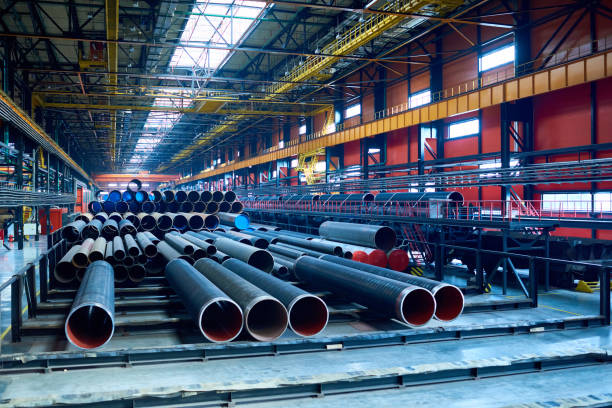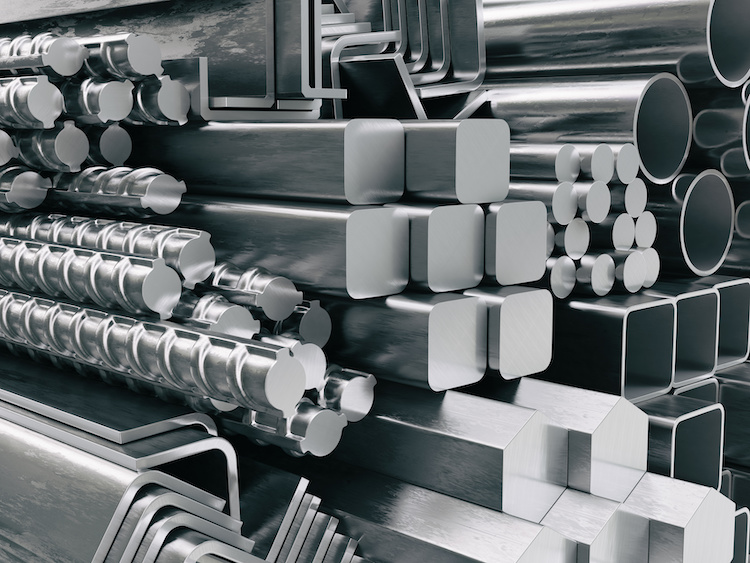Dependable Steel Fixing Services: Ensuring Architectural Honesty
Dependable Steel Fixing Services: Ensuring Architectural Honesty
Blog Article
Innovative Fads in Steel Fabrication: Enhancing Toughness and Accuracy
In the realm of steel fabrication, the quest of sturdiness and accuracy has actually resulted in a wave of ingenious patterns that are reshaping the market. From improvements in welding technologies to the combination of robot automation in fabrication processes, the landscape of steel manufacturing is evolving quickly. High-strength alloy development, coupled with the usage of 3D modeling and simulation software program, is pressing the borders of what is possible in terms of architectural integrity and precision. Additionally, the growing emphasis on lasting methods in steel manufacturing is not just driving effectiveness however also fostering a more ecologically aware method to manufacture. These patterns are not just shaping today yet additionally laying the foundation for the future of steel manufacture, assuring more improvements in durability and accuracy.
Advanced Welding Technologies
In the world of steel manufacture, the adoption of sophisticated welding modern technologies has actually dramatically reinvented the market's approach to accomplishing remarkable quality and precision in architectural welds. Advanced welding innovations, such as laser beam welding and rubbing mix welding, have become game-changers in the area. Laser beam welding utilizes a concentrated laser beam to sign up with steel parts with amazing precision and rate, making it ideal for thin products and elaborate layouts. On the various other hand, friction mix welding develops extremely strong bonds by mechanically intermixing the particles of the materials at the joint, eliminating the demand for melting the metal. These technologies supply numerous benefits, consisting of minimized heat-affected areas, very little distortion, and boosted mechanical homes in the bonded joints. By leveraging these innovative welding strategies, steel producers can raise the durability, stamina, and precision of their architectural welds, satisfying the progressively requiring needs of contemporary building and construction tasks.
Robot Automation in Fabrication
Accepting robot automation has come to be a keystone of modern-day steel construction methods, improving and simplifying processes effectiveness across the market. Robots are changing the way steel elements are manufactured, providing unrivaled precision and speed while decreasing human mistake. These automated systems can manage repetitive jobs with constant precision, causing higher high quality final product.
One trick advantage of robotic automation in steel manufacture is the capacity to function around the clock without fatigue, considerably increasing production outcome. This continual procedure decreases downtime and increases job timelines, inevitably saving prices for manufacturers. In addition, robotics can be configured to execute detailed tasks that might be challenging or harmful for human employees, improving safety and security in the workplace.
Furthermore, robotic automation enables seamless assimilation with other digital innovations, such as computer-aided style (CAD) software and Net of Things (IoT) systems (Alpha reo). This interconnected method boosts communication in between different phases of construction, optimizing operations and making certain real-time monitoring and control. As the steel construction sector continues to develop, robotic automation stands apart as a transformative force driving performance and precision in making procedures

High-Strength Alloy Advancement
The advancement of high-strength alloy development in steel manufacture is reshaping the sector's approach to boosting material resilience and efficiency. High-strength alloys are crafted to display premium mechanical buildings, such as raised article tensile strength, durability, and corrosion resistance contrasted to conventional steel qualities. By including these advanced alloys right into manufacture processes, makers can produce elements that endure higher tension levels and extreme atmospheres, leading to even more long lasting and reliable end items.
One trick advantage of high-strength alloy growth is the capability to reduce product thickness without endangering structural stability. This not only results in lighter-weight elements yet also adds to cost financial savings and boosted efficiency in fabrication and setting up processes. The improved strength-to-weight ratio of these alloys allows for the style and building and construction of structures with higher load-bearing capabilities while minimizing general weight.
3D Modeling and Simulation Software
Advancements in steel fabrication procedures have actually been considerably moved by the combination of sophisticated 3D modeling and simulation software application tools. These tools enable makers to create comprehensive digital designs of their tasks, allowing them to picture the end product with accuracy before any kind of physical job begins. By simulating different anxiety factors, environmental problems, and structural lots, makers can optimize designs for enhanced toughness and performance. Additionally, 3D modeling and simulation software enhance the production process by determining possible problems early, decreasing the demand for expensive rework and reducing product waste.

Sustainable Practices in Steel Manufacturing
Including lasting methods into steel production procedures is crucial for minimizing ecological effect and guaranteeing long-term source accessibility. One essential sustainable practice is the fostering of energy-efficient innovations to decrease greenhouse anchor gas exhausts during the steel manufacturing procedure. This consists of utilizing renewable energy resources, such as solar or wind power, to power steel plants and carrying out energy-efficient tools to maximize power usage.
Another crucial element of lasting steel manufacturing is the accountable sourcing of resources. This includes making sure that the iron ore and various other resources used in steelmaking are acquired from moral and eco pleasant sources. By advertising transparency in the supply chain and adhering to rigorous environmental standards, steel manufacturers can reduce the negative effects of source extraction on local environments and neighborhoods.

Final Thought
To conclude, the innovative fads in steel manufacture such as sophisticated welding technologies, robotic automation, high-strength alloy growth, 3D modeling and simulation software program, and sustainable methods are enhancing the sturdiness and accuracy of steel items. These developments are transforming the steel fabrication industry by improving sustainability, top quality, and efficiency. It is clear that the future of steel manufacture lies in welcoming these advanced technologies to meet the demands of modern-day building and manufacturing sectors.
In the world of steel fabrication, the quest of sturdiness and precision has actually led to a wave of ingenious patterns that are reshaping the market.In the realm of steel manufacture, the adoption of advanced welding modern technologies has actually considerably changed the market's method to achieving superior top quality and precision in architectural welds. As the steel fabrication industry continues to develop, robot automation stands out as a transformative pressure driving performance and accuracy in manufacturing procedures.
Moreover, recycling and recycling steel scrap and waste products play a significant function in enhancing the sustainability of steel production. Alpha reo.In final thought, the ingenious trends in steel manufacture such as advanced welding modern technologies, robot automation, high-strength alloy advancement, 3D modeling and simulation software program, and sustainable practices are boosting the toughness and precision of steel products
Report this page